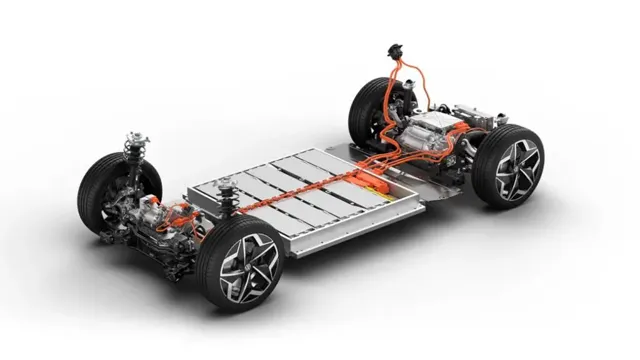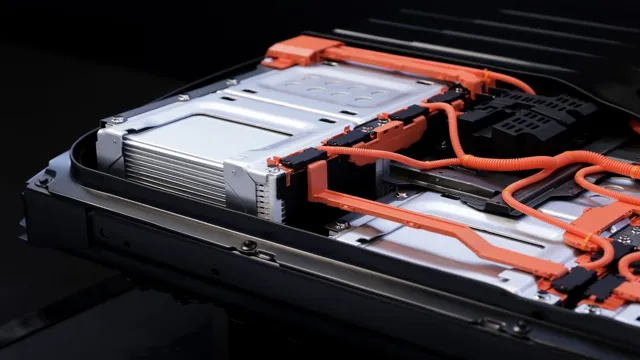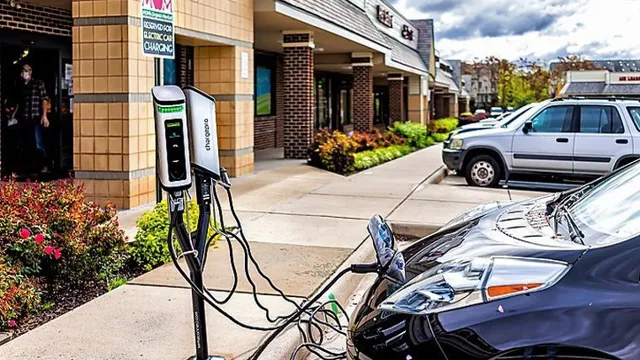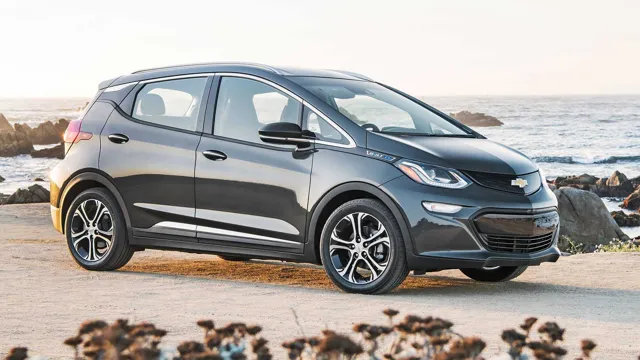Powering Up: Exploring the Revolutionary Battery Arrays in Electric Cars
Electric cars have been around for decades, but they have only recently become more widespread, and their power source has been at the forefront of innovation. Battery arrays in electric cars are the powerhouse behind the vehicle’s movement. The power source of electric vehicles has always been a topic of considerable interest since it defines how far we can go and what driving performance we can expect.
The batteries used in electric cars are essentially rechargeable, and they are the key component that sets them apart from traditional vehicles. As technology has advanced and more affordable materials have become available, battery arrays have become more sophisticated, efficient, and reliable. But what exactly are battery arrays, and how do they work in electric cars? Let’s explore the answer together.
The Science Behind Battery Arrays
An essential component of electric cars is the battery array, which provides the power for the vehicle’s motor. Battery arrays are made up of multiple individual battery cells that have been connected together, typically in series or parallel. By employing multiple cell configurations, battery arrays can be designed to deliver the exact amount of power necessary to operate the electric car.
While lithium-ion batteries are the most popular type of battery used in electric cars, other materials, such as solid-state batteries, are being explored because of their potential to offer even greater energy storage capacity and faster charging times. Additionally, battery arrays’ performance is affected by factors like temperature, charge rate, and depth of discharge, so manufacturers must design arrays that can withstand these conditions and still deliver the required power output. As electric cars continue to evolve, battery arrays will undoubtedly play an essential role in determining their success.
Chemical Components of Lithium-ion Batteries
Lithium-ion batteries have become essential in our daily lives due to their use in powering a variety of devices from smartphones to electric cars. At their core, lithium-ion batteries consist of three main components; the anode, cathode, and electrolyte. The anode is typically made of graphite, while the cathode is made of a lithium metal oxide such as cobalt, nickel, or manganese.
The electrolyte is usually a combination of lithium salt and organic solvents. When a battery is charged, lithium ions travel from the cathode to the anode through the electrolyte, storing energy. When the battery is used, the ions move back from the anode to the cathode, releasing the stored energy.
Understanding the chemical components of lithium-ion batteries is crucial in advancing battery technology to make them more efficient, sustainable, and reliable for future generations.

How Battery Arrays are Configured in Electric Cars
Electric cars are powered by battery arrays that store energy to run the electric motor. The science behind configuring these battery arrays is crucial for the performance and range of the electric car. Battery arrays are composed of individual battery cells, which are connected in series or parallel.
Connecting cells in series increases the voltage of the battery array, while connecting them in parallel increases capacity. To balance the voltage and capacity of the battery array, engineers use battery management systems (BMS) and cell balancing circuits. The BMS monitors the state of each cell and manages the charging and discharging process, while cell balancing circuits ensure that all cells are charged and discharged equally.
The size, shape, and orientation of the battery array depend on the structure of the car and the desired range. The goal is to configure a battery array that optimizes power and range while remaining safe and reliable for the electric car driver.
Pros and Cons of Battery Arrays in Electric Cars
Battery arrays are an integral component of electric cars, powering them for long distances and ensuring a smooth driving experience. However, there are both pros and cons to this technology that should be taken into consideration before making a purchase. One of the advantages of battery arrays is that they provide a more environmentally friendly alternative to gasoline-powered vehicles, reducing the carbon footprint and helping to combat climate change.
Additionally, they offer a lower overall cost of ownership as they require less maintenance than traditional vehicles. On the other hand, battery arrays face certain drawbacks, such as limited range and lengthy recharge times, which may be inconvenient for some drivers. Furthermore, the production of these batteries requires the use of rare metals and minerals, which may have negative environmental impacts.
Overall, battery arrays are a promising technology for the future of transportation, but it is important to weigh the pros and cons before making a final decision.
Advantages of Battery Arrays
Battery arrays are a hot topic in the electric vehicle industry, with many advantages and disadvantages to consider. One of the main benefits of using battery arrays in electric cars is their ability to store and provide large amounts of energy. This results in longer driving ranges and faster acceleration, making them more practical and efficient for everyday use.
Additionally, battery arrays are inherently more environmentally friendly as they produce zero emissions, offering an all-around cleaner and more sustainable alternative to traditional gas-powered cars. However, there are also some drawbacks to consider. Battery arrays can be heavy and take up a lot of space, impacting the overall weight and design of the car.
They can also be expensive and difficult to replace, with some manufacturers offering limited warranties on their battery arrays. Overall, while there are both advantages and disadvantages to battery arrays, it’s clear that they offer a promising future for the electric vehicle industry.
Disadvantages of Battery Arrays
Battery arrays have become an essential component of electric cars. They allow for efficient energy storage and extended driving ranges. However, like any technology, battery arrays come with their disadvantages.
One primary disadvantage is the limited lifespan of batteries. Their capacity to hold a charge gradually decreases over time, and the batteries will eventually require replacement. Battery replacement can be expensive, and the disposal of old batteries can harm the environment if not done correctly.
Another drawback is the weight of battery arrays, which can impact a vehicle’s handling and overall performance. Nevertheless, advancements in battery technology continue to improve, and manufacturers are exploring ways to reduce the environmental impact of battery production and disposal. It is essential to weigh the pros and cons when considering an electric car with a battery array and opt for the solution that best meets your needs.
Life Expectancy of Battery Arrays
Battery arrays are an essential component of electric cars, providing power to run the motor. While they offer a sustainable and eco-friendly solution, there are advantages and disadvantages that come with their use. One of the most significant advantages of battery arrays is their ability to store large amounts of energy.
Electric cars can drive relatively long distances without the need for a recharge. However, the downside is that the life expectancy of battery arrays is limited, often lasting between 5 to 10 years, depending on the quality of the battery. This means that they need to be replaced regularly, creating additional expenses for the car owner.
It’s essential to consider the pros and cons of battery arrays before purchasing an electric car to ensure it aligns with one’s needs and budget.
Future of Battery Arrays in Electric Cars
As electric cars become increasingly widespread, so too does the need for advanced battery arrays. These arrays are the linchpin to EV functionality, as they determine how far a car can travel on a single charge. In the future, we can expect battery arrays to be more durable and powerful, allowing for longer driving ranges and faster charging times.
Many companies are investing heavily in research and development for these new battery technologies, which include solid-state batteries, lithium-sulfur batteries, and sodium-ion batteries. Each of these options has its own unique benefits, but all promise to push the boundaries of what electric cars can achieve. With the right battery array technology powering them, electric cars could soon become dominant on our roads, leading to a cleaner, more sustainable future for all.
Research and Development for Better Battery Arrays
“battery arrays in electric cars” The future of electric cars relies heavily on the development of better battery arrays. From range anxiety to charging infrastructure, electric cars face a host of challenges, but none more pressing than the need for more efficient batteries. While lithium-ion batteries have served the industry well, they have their limitations when it comes to range and charging times.
Researchers are exploring new battery technologies such as solid-state and lithium-sulfur batteries, which promise to deliver higher energy densities, faster charging times, and longer lifespans. Imagine a world where electric cars can travel hundreds of miles on a single charge and take only minutes to recharge. With continued research and development, this future is not far off.
The success of electric cars hinges on the advancement of battery technology, and the industry is well aware of this fact. As new battery innovations are introduced, we can expect electric cars to become more reliable, user-friendly, and cost-effective. The battery arrays in electric cars are indeed one of the most exciting areas of research and development in the automotive industry today.
Impact on Environment and Sustainability
The future of battery arrays in electric cars is bright as advancements in technology continue to improve efficiency and sustainability. These battery arrays have the potential to reduce our reliance on fossil fuels and decrease harmful emissions, but it’s important to fully consider their impact on the environment and sustainability. Despite their benefits, battery production and disposal can contribute to environmental issues and the depletion of natural resources.
However, with the advancement of recycling technologies, end-of-life batteries can be recycled and repurposed, reducing waste and environmental impact. Like any technology, battery arrays have their advantages and disadvantages, but with proper planning and consideration, their potential contributions to a sustainable future can be maximized.
Conclusion: Battery Arrays Powering Electric Cars to the Future
In conclusion, a battery array in electric cars is like a pack of energy-filled superheroes ready to take on any journey. They work together to power the vehicle and provide a more sustainable and efficient way of transportation. With each cell bringing their unique abilities to the circuit, the battery array ensures the car is always charged and ready to go.
So the next time you see an electric car zipping by, remember that it’s not just a car – it’s a team of electrifying batteries working in perfect harmony.”
FAQs
What is a battery array in electric cars?
A battery array in an electric car is a collection of batteries connected in series or parallel to provide energy to power the car’s electric motor.
How long does a battery array last in an electric car?
The lifespan of a battery array in an electric car varies depending on factors such as driving habits, temperature, and maintenance. On average, a battery array can last between 5 to 10 years.
Can a battery array in an electric car be replaced?
Yes, a battery array in an electric car can be replaced when it reaches the end of its lifespan. However, replacing the battery array can be costly and may not be a cost-effective solution for some older electric cars.
How does the size of the battery array affect the range of an electric car?
The size of the battery array affects the range of an electric car. A larger battery array provides more energy to power the electric motor, which extends the car’s range. However, a larger battery array also adds to the weight of the car, which can impact its efficiency and performance.





